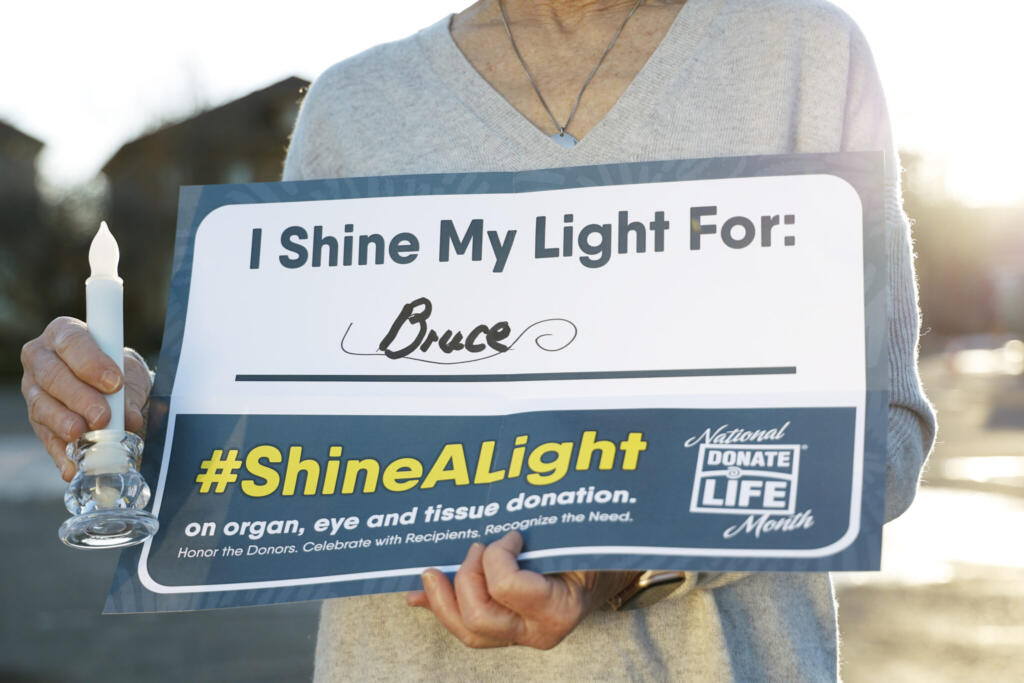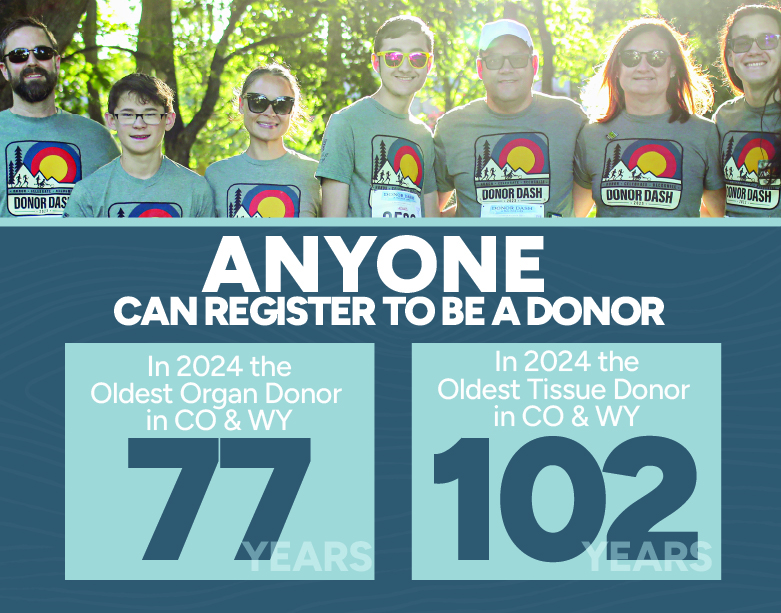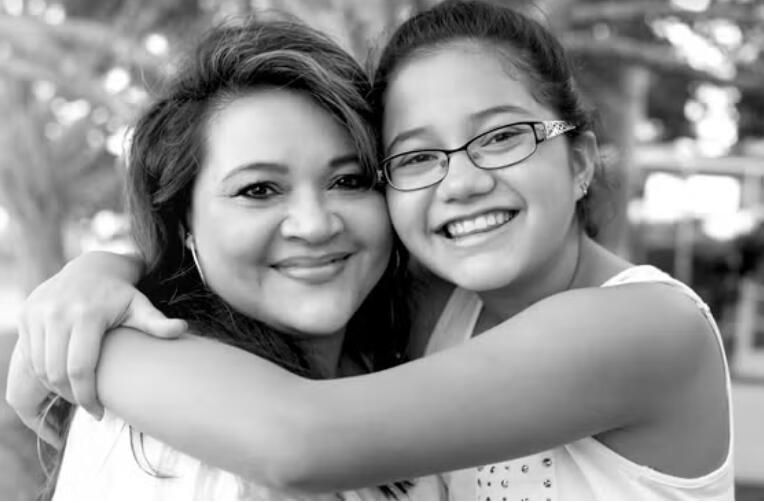Organ donation and transplantation offer the gift of life to many individuals in Colorado and Wyoming. But how many people are organ donors? Thousands generously register as donors, yet the need for transplants continues to grow. Transplant recipients undergo a surgical process that replaces failing organs with healthy ones from others who no longer need them. Vital organs are replaced, giving those with life-threatening diseases or injuries a second chance at life. Additionally, donated tissues such as corneas, tendons, and bones can enhance lives by restoring sight, movement, and physical functions.
Typically, organ and tissue donors are individuals who have recently passed away. They have either registered as organ and tissue donors before death or had their family decide on their behalf. In 2023, Colorado and Wyoming were among the top ten nationally for Donor Registration Rate (DDR). Today, more than 60% of residents are registered.
Approximately 1,300 people in Colorado and Wyoming await lifesaving organ transplants. This contributes to the over 100,000 individuals nationwide on the waiting list. Thousands more could benefit from organ and tissue donations, providing a new chance at a healthy and productive life. Unfortunately, the demand surpasses the available donors. A single person can save up to eight lives through organ donation and save and heal up to 75 lives through tissue donation.
National Data
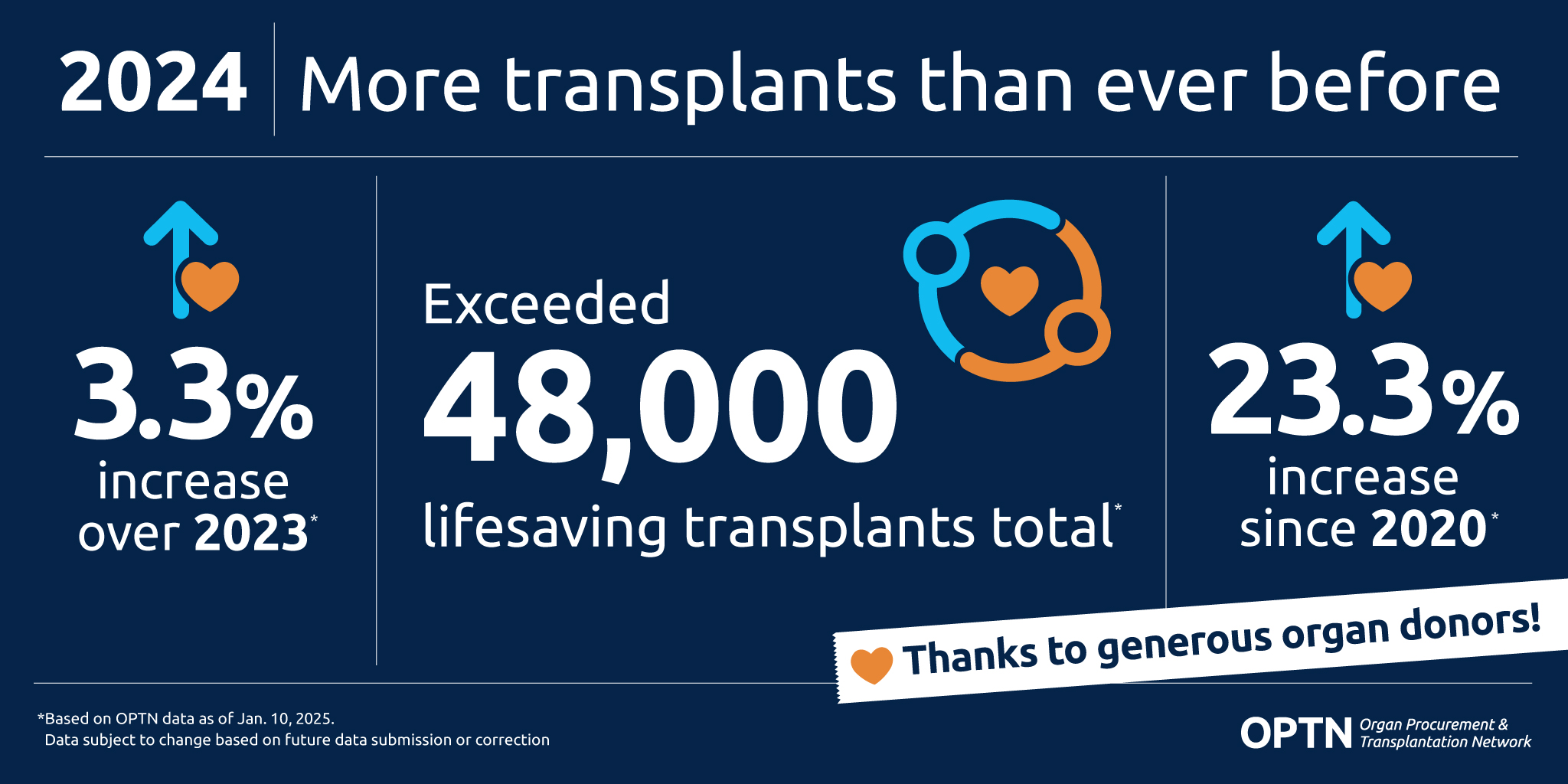
Currently, over 103,000 people are on the national transplant waiting list. The list is diverse—it includes people of every age, ethnicity, and gender. Blood type and other medical factors weigh into the allocation of every donated organ.
In 2024, a total of 48,149 transplants were performed, marking a 3.3% increase from 2023 and a 23.3% rise over the past five years, marking a key milestone in the effort to expand lifesaving transplants and enhance the system.
These lifesaving procedures were made possible by the generosity of 16,988 deceased donors and 7,030 living donors.
Demographic Breakdown and Historical Trends
In 1954, the kidney was the first human organ to be transplanted successfully. Liver, heart, and pancreas transplants were successfully performed by the late 1960s. Lung and intestinal organ transplant procedures started in the 1980s. Until the early 1980s, the potential of organ rejection limited the number of transplants performed. Medical advances in the prevention and treatment of rejection led to more successful transplants and an increase in demand. In 2022, the U.S. reached an historic milestone of one million transplants.
The need for lifesaving organ transplants impacts people of all races, ages, and genders. However, there is a critical need for more multiethnic individuals to register as organ and tissue donors, as nearly 60% of those on the national transplant waiting list come from racial and ethnic minority groups, including Hispanics, African Americans, and Asian/Pacific Islanders.
While organ matching isn’t based on race or ethnicity, transplants between donors and recipients of the same background can be more compatible. Minority communities, especially those with higher rates of kidney disease, make up a significant portion of the transplant waiting list. In 2024, organ transplants increased among Hispanic/Latino recipients by 6.5% (9,097 transplants) and among Black non-Hispanic recipients by 1.5% (10,990 transplants) compared to 2023.
Regardless of how many people are organ donors, this underscores the critical need for more registrations, especially within multiethnic communities. Minority populations are more likely to need transplants, partly due to a higher prevalence of conditions like diabetes and high blood pressure, which can lead to organ failure. For example, African Americans, Hispanics, and Pacific Islanders are three times more likely than Caucasians to develop end-stage renal disease, often linked to high blood pressure and other health conditions.
The Importance and Impact of Organ Donor Registration
Saying “yes” to organ and tissue donation saves and heals lives. Every year, organ and tissue transplants provide hope to tens of thousands of people suffering from disease, injury, trauma, or blindness. People can register to give the gift of life when they get or renew their driver license or state ID, or anytime online.
How many people are organ donors?
As of 2024, 170 million people in the U.S. have registered as organ donors. However, not everyone who registers is able to donate. In fact, only 3 in 1,000 people pass away in a manner that allows for deceased organ donation. That’s why more willing donors are needed.
The Organ Donation Process
When a person has a life ending injury and is connected to ventilated support, the hospital contacts Donor Alliance who evaluates if donation is possible. Donor Alliance talks with the family about donation and honoring their loved one’s decision. A nationwide database quickly identifies the best match for an organ recipient for transplantation. Donor Alliance then walks alongside the family during the recovery process, ensuring the donor’s gifts are safely received at transplant centers in a timely manner.
Timing is important as organs can only be preserved for a fairly short time. Transplant teams prefer the shortest possible preservation time to offer the best chance of a successful transplant. Kidneys are usually transplanted within 36 hours after removal from the donor. The liver, pancreas, and intestinal organs are typically transplanted within 12 hours. Hearts and lungs have the shortest preservation time; they are usually transplanted within six hours.
The United Network for Organ Sharing (UNOS) partners with the community and with innovative technology companies to continuously improve the proprietary, secure online-based systems involved in placing donated organs efficiently. These partnerships also support the collection of essential data that help improve the national system and increase the number of transplants. Researchers test and innovate to increase efficiency—enabling all parts of the organ donation and transplant community to thrive and to save and heal even more lives.
Personal Stories and Testimonials
Amy is a donor mother from Englewood, CO. In 2001, Amy’s daughter, Nicole, was just 15 years old when she passed away. There is nothing more devastating than losing a child. But in the midst of her loss, Amy made a decision that ultimately saved many lives. Amy’s daughter Nicole donated her heart, liver, and kidney to people in need of life-saving transplants. Because of this generous gift, numerous people were given a second chance at life. 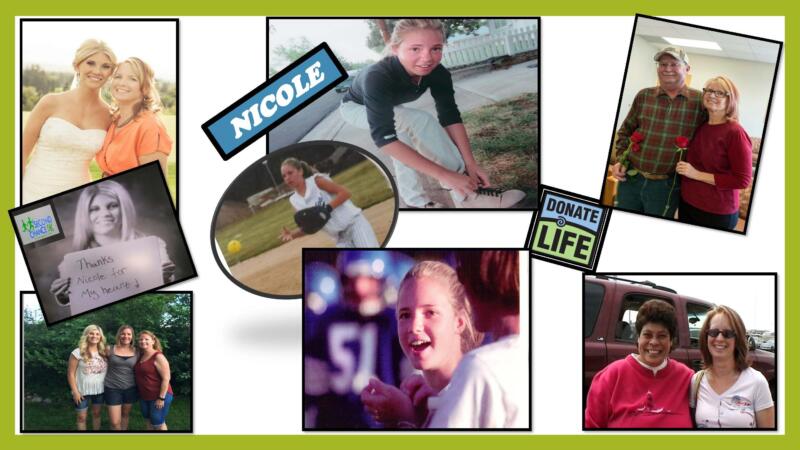
Mandee is one of those people. She had suffered from a congenital heart defect since birth, but after receiving Nicole’s heart, Mandee has a new lease on life. In 2003, Mandee was a bridesmaid at Nicole’s sister’s wedding.
“Donor Alliance has been a great lifeline for me. They were there for our family during our grief and they serve as a support to us today. Almost 10 months after Nicole died, I attended a Donor Alliance workshop on how to tell your story. I always knew that donating was the right thing to do, but until that day I never realized how many people die waiting for organs. That was the day I realized I’d been so wrapped up in the tragedy of Nicole’s death that I forgot that she gave three people a new lease on life. It really hit home that something good had come out of this tragedy.” – Amy, Donor Mother
Legislation and Policy Impact
The Uniform Anatomical Gift Act, enacted in 1968, provides the legal foundation upon which organs and tissues can be donated for transplantation as a gift. The donor registries for our region are a confidential, first-person authorization list of a person’s decision to give the gift of life. By registering their decision, a person is giving hope to those awaiting lifesaving and healing transplants.
Both state and federal laws and regulations provide a safe and fair system for allocation, distribution, and transplantation of donated organs. The Health Resources and Services Administration (HRSA) is the federal agency that oversees the organ transplant system in the United States. The U.S. Congress passed the National Organ Transplant Act (NOTA) in 1984 to address the organ donation shortage and improve the organ matching process. NOTA then established the Organ Procurement and Transplantation Network (OPTN) to maintain a national system to match organs and individuals.
Donor Alliance is the federally designated Organ Procurement Organization (OPO) for Colorado and most of Wyoming. It is one of 55 unique organizations across the country responsible for the evaluation, recovery, preservation, and transportation of organs for transplantation. In addition to its responsibilities as an OPO, Donor Alliance also helps save and heal lives through tissue donation. Every year, tissue transplants provide lifesaving and healing hope to tens of thousands of people suffering from disease, injury, trauma, or blindness. Donor Alliance is also unique in that it manages the Donate Life Colorado and the Donate Life Wyoming donor registries, which are symbols of the cause.
Psychological and Social Aspects
For donor families, they can find solace in the knowledge of their loved one’s life-saving legacy. For instance, successful heart transplant recipients enjoy higher energy levels, a better quality of life, and the blessing of living longer.
Financial Aspects
Donor families are never responsible for the costs related to recovering and processing organs and tissues for transplant. The family may be expected to pay for medical expenses incurred before death is declared and for expenses involving funeral arrangements.
Becoming an Advocate for Organ Donation
Donor Alliance advocates are the heart and soul of its efforts. They inspire the public about the importance of registering as organ and tissue donors in Colorado and Wyoming. Donor Alliance relies heavily on volunteer participation to make its programs possible, from grassroots advocacy to public outreach through education and awareness events. Advocates help put a face to the cause, sharing their stories about how they’ve been personally touched by the gift of life. Making this connection with the public also helps amplify the importance of becoming an organ and tissue donor and why it’s equally important to share that decision with family members and friends. They support the mission in increasing how many people are organ and tissue donors.
Join Donor Alliance’s “Advocates for Life” volunteer program—it’s comprised of donor family members, transplant recipients, transplant candidates and others who are passionate about supporting organ and tissue donation and transplantation.
